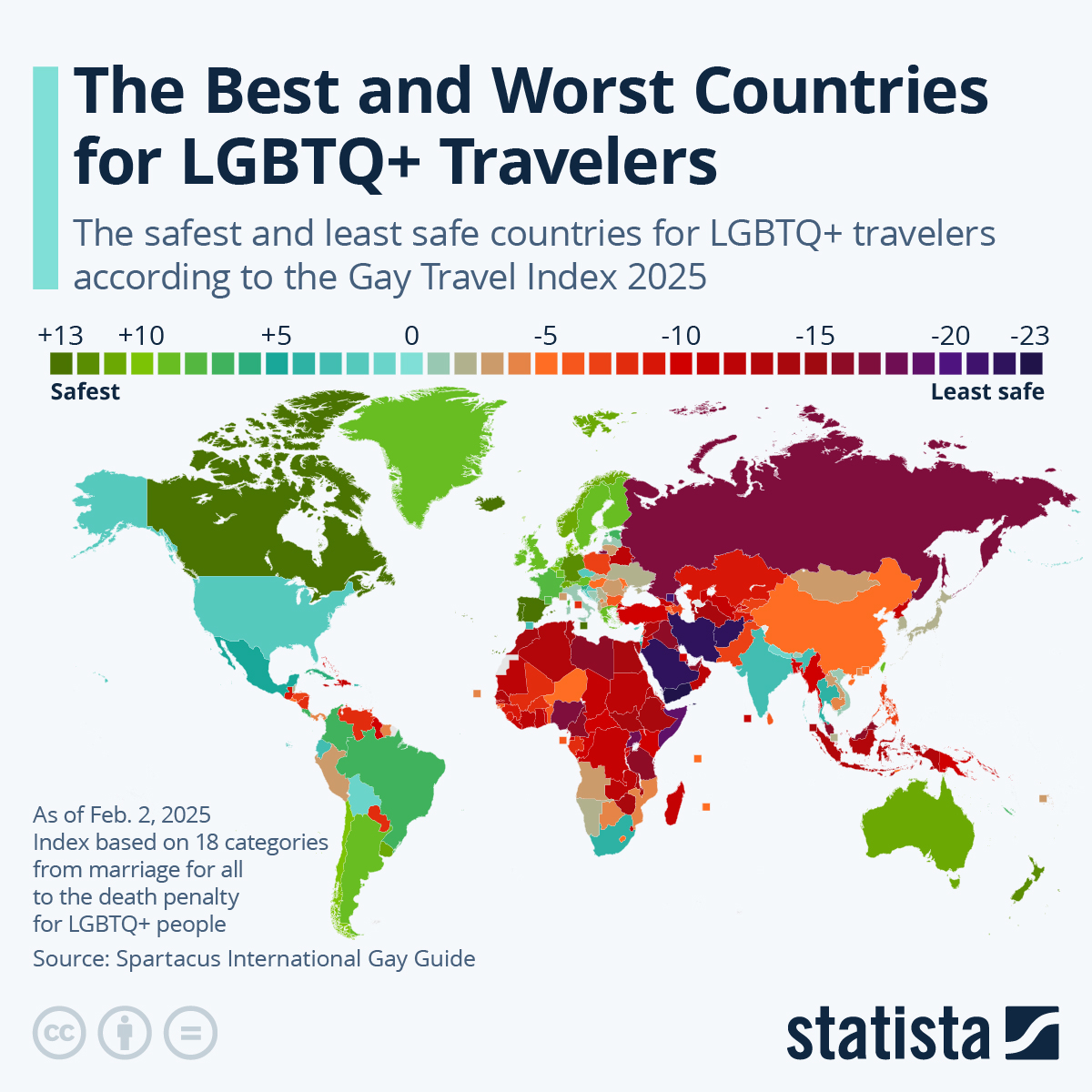LGBTQ+ in Latin America - statistics & facts
LGBTQ rights movements across the region
The degree of rights the LGBTQ+ community has in the region varies according to the country and specific situations. For example, in 33 Latin American and Caribbean countries is possible to register an organization related to sexual orientation, but other rights such as having consensual same-sex acts, freedom of expression on sexual orientation, and protection against discrimination are not as widespread. Therefore, the number of civil organizations that seek to demand, promote, and protect rights grows every year.One of the earliest organizations was in Mexico in 1971 with the Homosexual Liberation Front (Frente de Liberación Homosexual), with not much success and stopping activities just two years later. In 1980, the Bahia’s Gay Group (Grupo Gay da Bahia) was founded in Brazil, which is also one of the oldest organizations still in place in the country. That same year, in Peru, the Homosexual Movement of Lima (Movimiento Homosexual de Lima) was established. Nowadays, many organizations are in place across the whole region, and a large number of pride parades take place, including some of the biggest, like São Paulo LGBT Pride Parade or Mexico City Gay Pride.
A snapshot of Latin America’s worst region to be LGBTQ+

Undoubtedly, Central America and the Caribbean are the regions with the lowest scores for LGBTQ+ travelers in the Americas, and the situation is only worse for those living in them. In fact, 53 percent of the community in Central America was not confident of performing any public display of affection (PDA). But fear of discrimination or other violent acts is not exclusive to the public sphere, more than 32 percent of the surveyed stated that they suffered discrimination inside their own households.
Discrimination, social isolation, harassment, threats, and other hate crimes greatly affect the lives of the community. The difficulties, pressure, and struggles are a difficult things to cope with, in some cases to extreme instances. In the same survey, more than 60 percent of non-binary members of the community said that they had thought about committing suicide, making it the most affected sexual orientation in this sense.
Homophobia, religion, politics, and discrimination
Homophobia and transphobia in Latin America are a dangerous mixture of sexism, fear, ignorance, and religious beliefs. The region is well recognized as a very religious one, with almost 80 percent of the population with Christian beliefs. The faith of the population combined with ignorance create an unjustified sphere of rejection and fear of the unkwon, that is also often used by politicians in the region to block policies to win the vote of the majority. Most recently, former president Jair Bolsonaro used this strategy with the Liberal Party (PL), trying to reverse some advances Brazil had in previous years and try to criminalize homosexuality. In fact, during the 2022 elections, Bolsonaro's stronghold was among the evangelist group, getting almost half of the voters with this specific religious belief.The path is still long, but many countries already have laws to eradicate and prevent discrimination against minorities. Nonetheless, legalization must not only entry into force but also be standardized and used by the population, without any fear of retaliation from the authorities or the perpetrators. Countries, like Chile, started by derogating laws and creating new ones, and since 2015, the year that the South American country legalized same-sex civil unions, the number of reported cases of discrimination against the LGBTQ+ started to increase. The degree of discrimination varies among countries, in Mexico, around 28 percent of the community stated that they were victims of at least one work-related discrimination or mistreatment. While, in Central America, countries like Belize recorded the highest share of the community being discriminated and Costa Rica the least.



































































